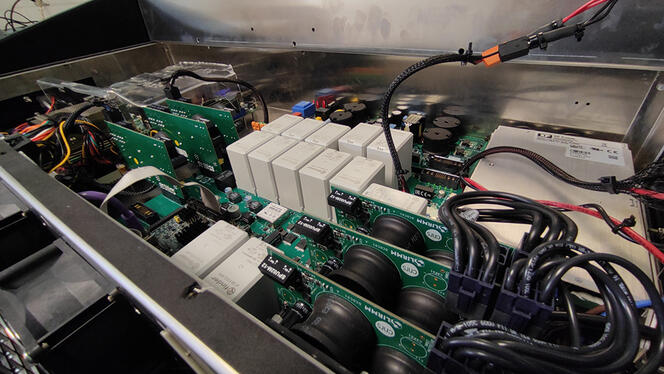At a time when the volume of digital data is growing at a dizzying pace, a team of researchers in Montpellier is exploring new ways of reducing its energy impact with the Genesis project.
The amount of digital data being created or replicated around the world is constantly increasing. This increase has repercussions on energy consumption: digital services account for between 6% and 10% of the world's electricity consumption. In France, this figure is estimated at 10%.
It is therefore pertinent to examine the place of data centers at the heart of this digital economy. " These data centers, equipped with servers, switches, storage and cooling systems, provide storage and computing services, usually for companies or organizations (...) Centralizing data in these places makes it possible to provide reliable access to this data at lower cost for the entities accessing it", explains Abdoulaye Gamatié, Research Director at the Montpellier Laboratory of Computer Science, Robotics and Microelectronics (Lirmm): a joint research unit of Montpellier University and CNRS.
"On average, datacenters are only used 30% of the time, whereas they are constantly powered up," observes Abdoulaye Gamatié. "We need to ensure quality of service while maximizing utilization. This can be tricky, given fluctuating demand. An e-commerce site is more in demand in December than in August, for example. To respond to peaks, it must therefore agree to allocate a higher-than-average number of resources," says Gilles Sassatelli, Research Director at Lirmm.
This steady rise can also be explained by the emergence of new services. First and foremost, video-on-demand. The proliferation of connected objects also plays a role.
Reduce energy losses while using renewable energies
Given that an increase in the number of services will automatically lead to an increase in traffic, what levers are available?
"Current trends are pushing towards the deployment of service closer to usage (edge computing), which reduces data traffic on the global infrastructure".
Another lever is the use of renewable energies. Integrated into datacenter plans for several years now, "this is often done with an accounting approach, by creating a photovoltaic park on an arbitrary site supposed to offset the datacenters' annual consumption".
There's also the technological lever: "We can design computing architectures and memory technologies that are not exclusively silicon-based, which will consume less energy while offering increased computing performance. Other levers being studied include controlling server operating frequency, intelligent allocation of tasks to servers according to their nature, and virtualization.
Observing data center practices, the Lirmm team found that "a significant proportion of infrastructure consumption was accounted for by components peripheral to IT functions. This led us to think about how we could drastically reduce energy losses while using renewable energies".
The Genesis project
To meet this challenge, the Lirmm team in Montpellier is proposing " a real paradigm shift: local computing units, themselves locally powered, and interconnected in a network so as to share data processing and storage, but also energy sources".
Lirmm has developed several generations of prototypes, with the support of the Occitanie Region.
"The Genesis scientific approach aims to integrate energy into a distributed system; as a finite resource and managed in the same way as storage or computing capacity. In this scheme, energy is allocated and routed between units, like data. This concept has required research at the interface of computer science, embedded systems and power electronics to create software and hardware objects with these capabilities".
First results
The Genesis project is based on a system of photovoltaic panels coupled to small data centers. Currently being evaluated on a small scale, Genesis is already achieving very encouraging results. " Thanks to calibrated modeling, using an experimental prototype installed at Polytech Montpellier, we have noticed that the ability to migrate both energy and data between computing units reduces energy from the power grid by 22% to 27% ".
One of the scenarios developed by the scientists targets a Nantes district with 2,600 residents. Taking into account architectural constraints, it would be possible to cover 30% of the roofs with solar panels that directly power small data centers, thus partially meeting the energy consumption of local digital activity. Another scenario, in a Montpellier district, envisages covering up to 50% of roofs, which would fully meet local demand.
The Lirmm team must now move on to a larger-scale prototype.
Références :







